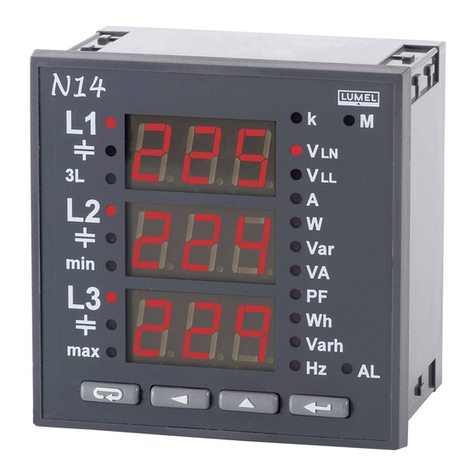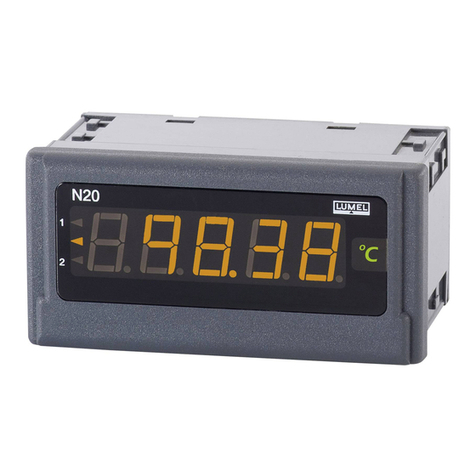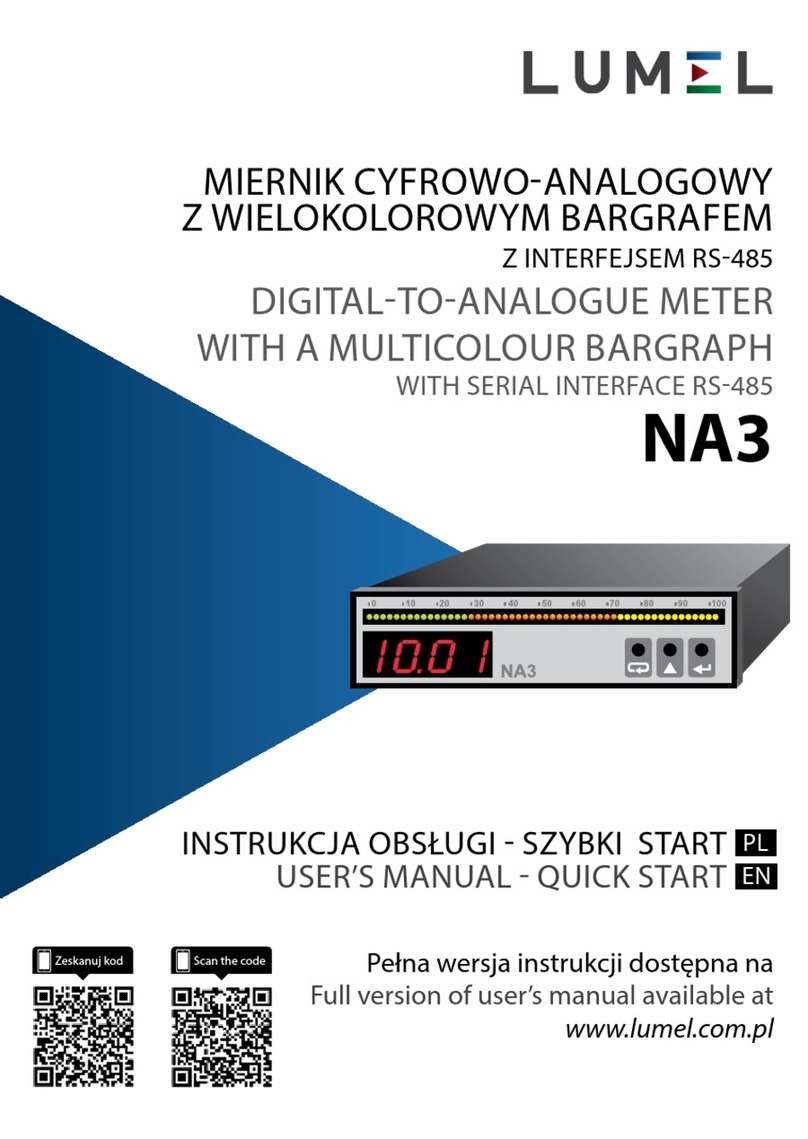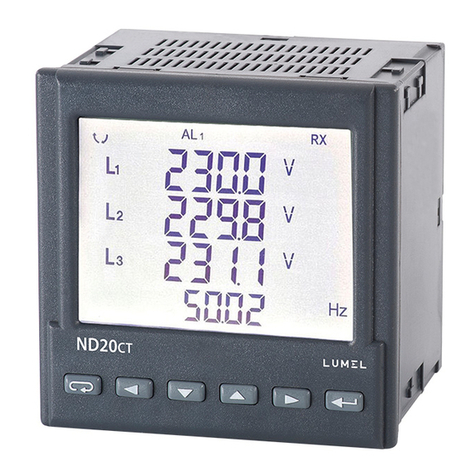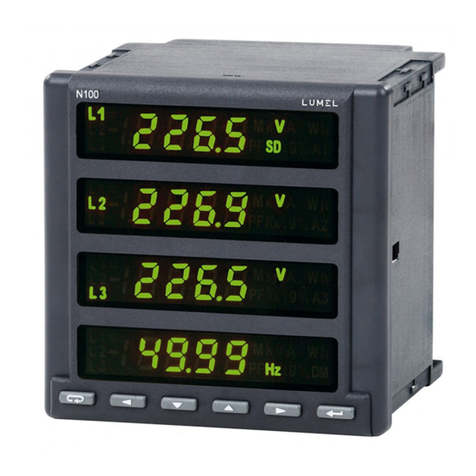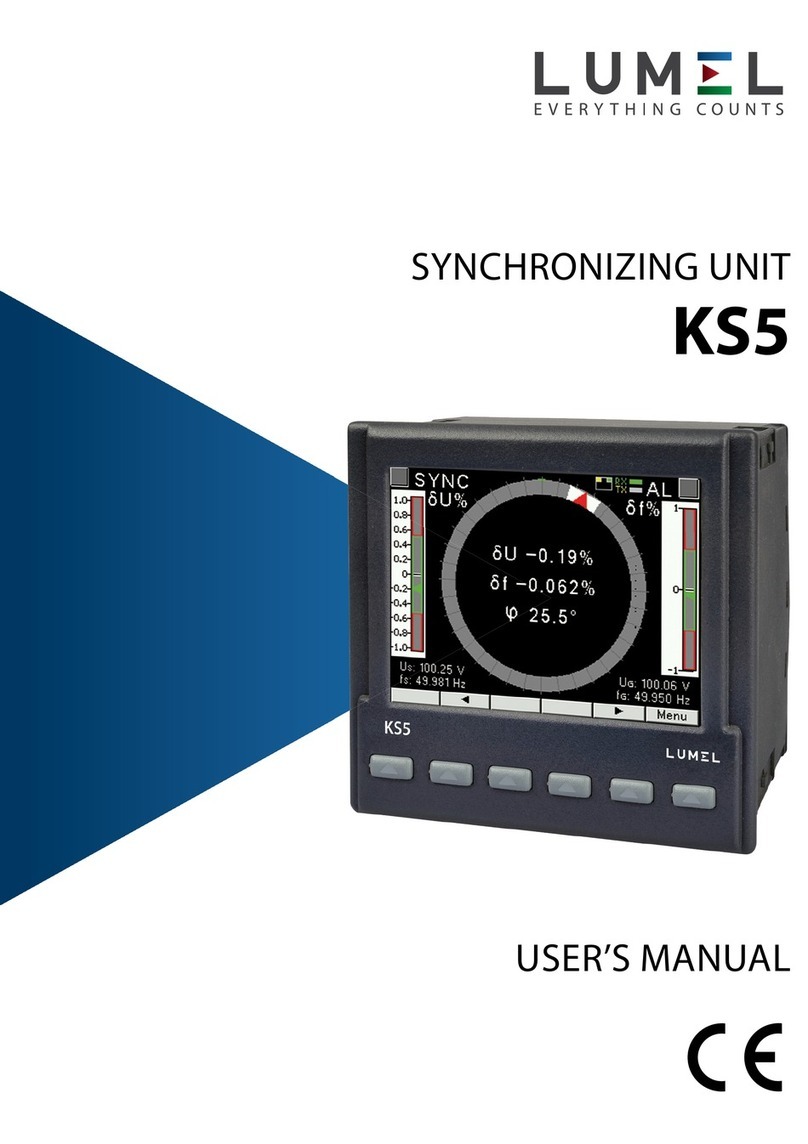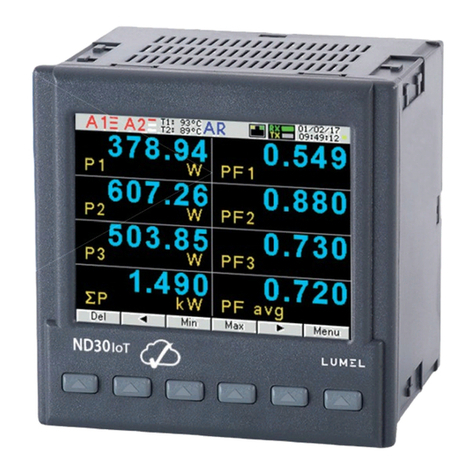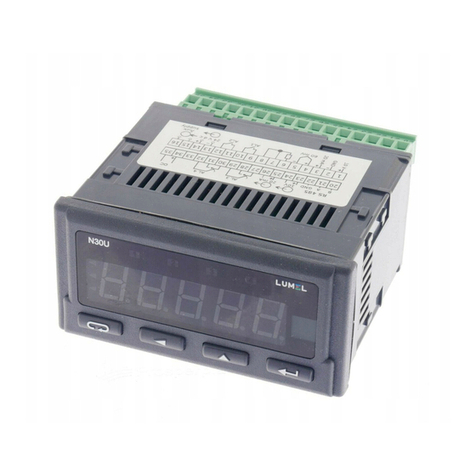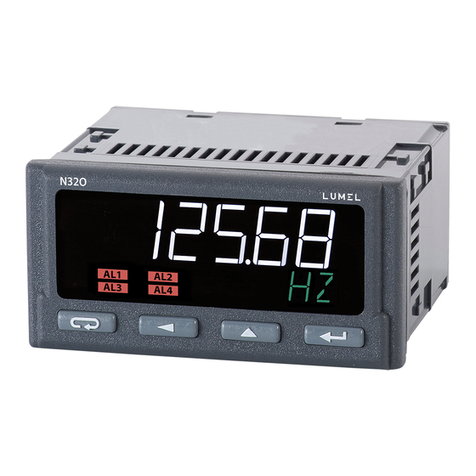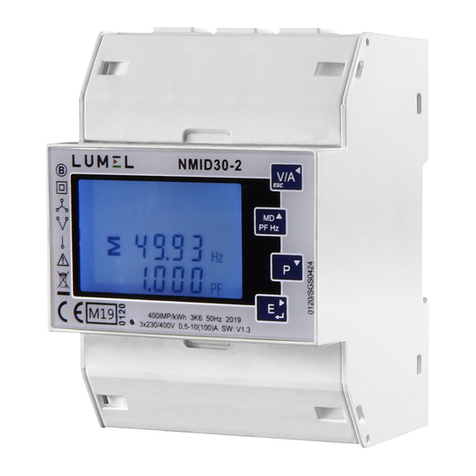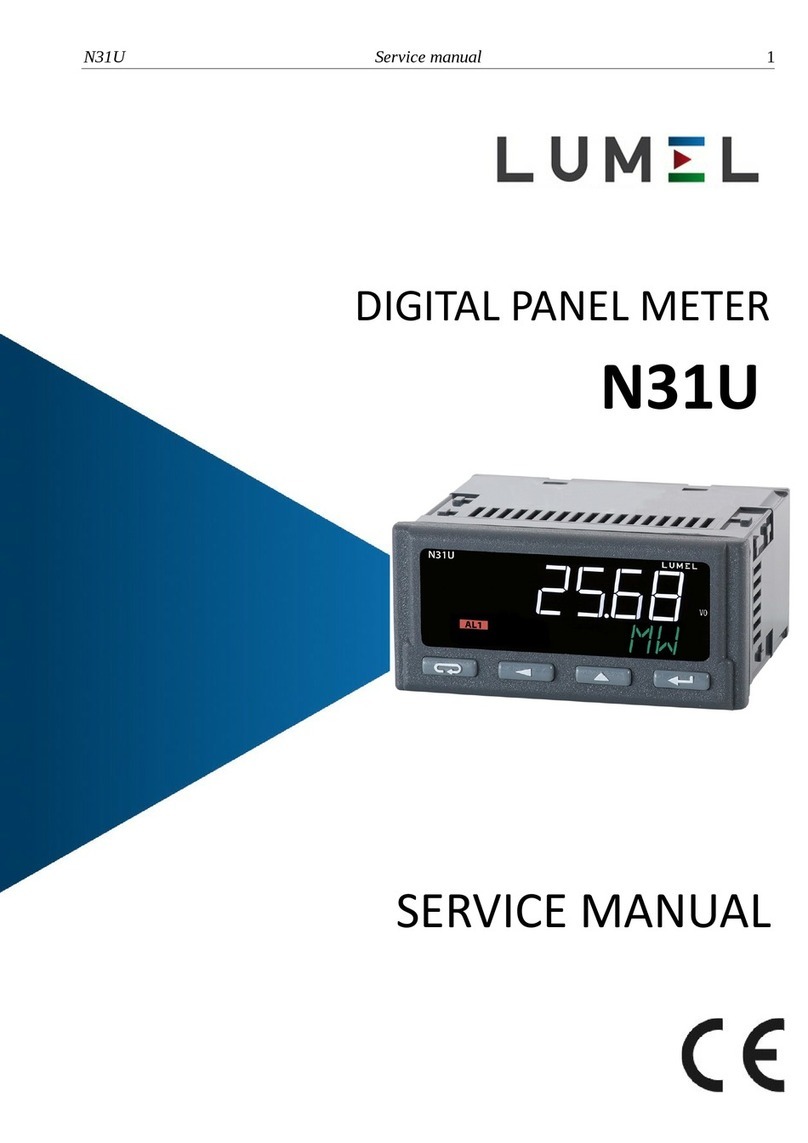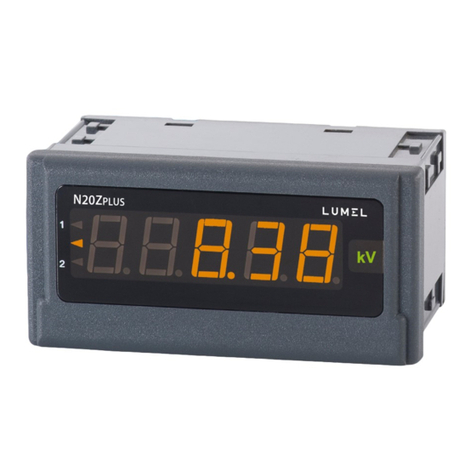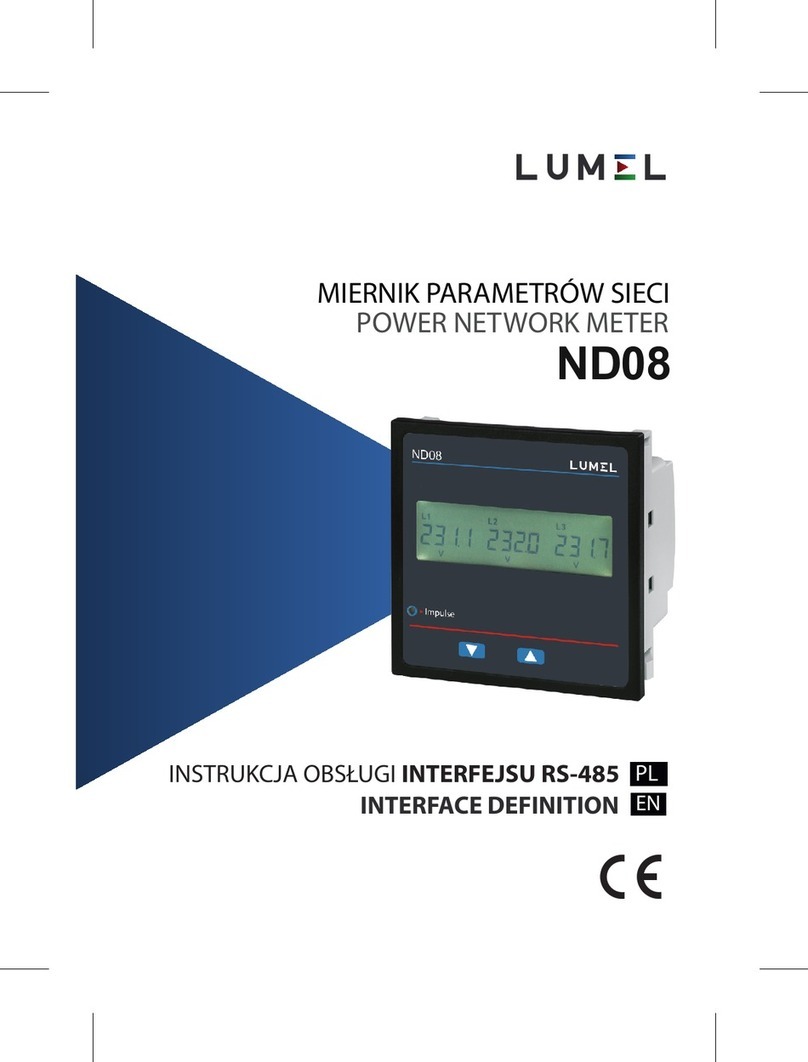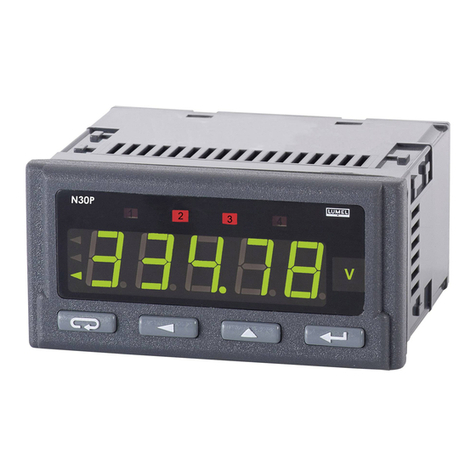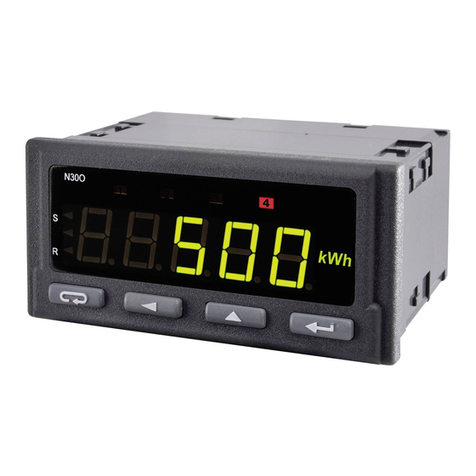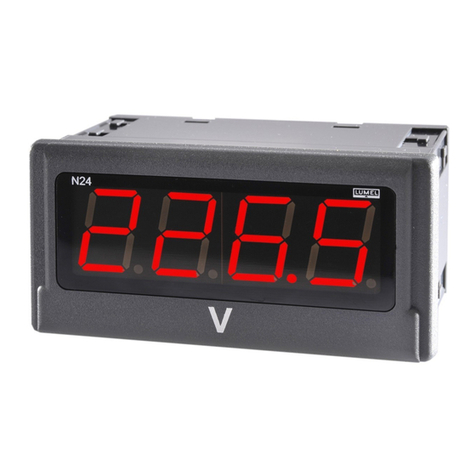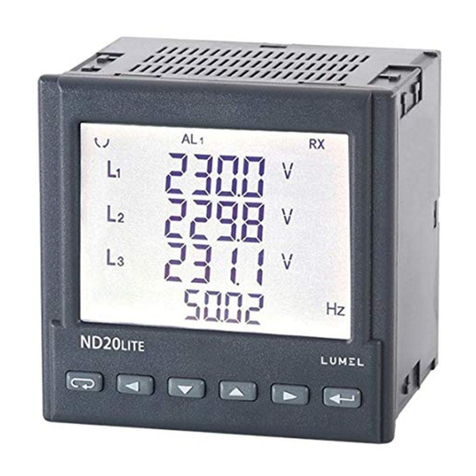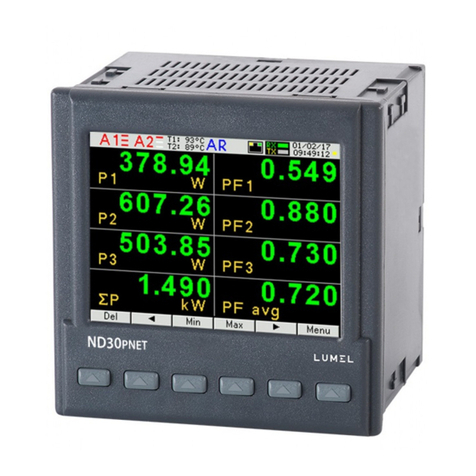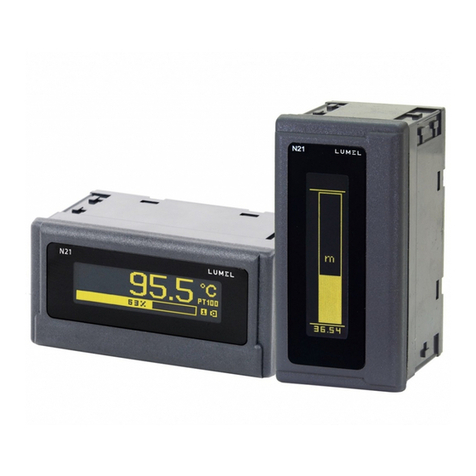
10
5.4. Parameters description
5.4.1. Display settings
Following elements are possible to be congured:
a) display colours of the measured value. The displayed range is divided
into three zones separated by KpL and KpH values (suitably the lower
threshold KpL and the upper threshold KpH of display colour change
– g.6). The colour of displayed numbers for each zone is selected
from three accessible colours: green, orange and red. KpL and KpH
values are set by the user and concern the displayed value (i.e. taking
also into consideration the individual characteristic). The manufacturer
value KpL is equal 100% of the rated value, however KpH is equal
105% of the rated value, e.g. for a 10 V meter execution they are
respectively: for KpL – 10 V and for KpH – 10.5 V.
Caution! After setting the individual characteristic, KpL and KpH
values are not automatically updated.
Fig. 6. Display color conguration
N20PLUS Instrukcja obsługi 7
Rys. 7. konfiguracja kolorów wyświetlania
b) punkt dziesiętny - precyzja pomiaru. Do wyboru jest 5 możliwych konfiguracji wyświetlania,
przy czym przy wyborze należy się kierować dokładnością pomiaru, np: dla zakresu 10 V –
błąd pomiaru wynosi 0,02 V, więc wybór precyzji z trzema miejscami po przecinku nie daje
dokładniejszych pomiarów. Fabrycznie dla wykonania z pomiarem napięcia i prądu ustawiona
jest precyzja 000,00; dla wykonania z pomiarem temperatury przez Pt100 – 0000,0; dla
wykonania z pomiarem temperatury przez termopary – 00000.
c) podświetlenie jednostki. Podświetlenie jednostki może być włączone lub wyłączone.
Fabrycznie jest włączone.
5.4.2. Parametry pomiaru
Pomiar możemy skonfigurować poprzez zmianę następujących elementów:
a) automatyczna kompensacja (temperatury zacisków w wykonaniu z pomiarem
termoelementem lub rezystancji przewodów dla wykonania z pomiarem Pt100). Wyłączenie
umożliwia podanie wartości temperatury zacisków lub rezystancji przewodów wykorzystywanej
w obliczeniach. Jako rezystancję podaje się sumę obu przewodów. Fabrycznie jest włączona.
b) czas uśredniania: do czasu uzyskania wymaganej liczby poprawnych pomiarów (zgodnie z
tablicą 1) wyświetlana jest wartość chwilowa z 1 pomiaru. Po zmierzeniu określonej liczby
pomiarów, wyświetlana jest średnia arytmetyczna ze zmierzonych pomiarów. Kolejne pomiary
dodawane są na zasadzie „okna kroczącego” tzn. najwcześniejszy pomiar jest odrzucany a na
jego miejsce wstawiany jest ostatnio zmierzony. Zmierzenie wartości spoza zakresu
pomiarowego powoduje wyświetlenie przekroczenia i rozpoczęcie liczenia pomiarów
poprawnych od nowa. Fabrycznie czas ustawiony jest na 1s
Tablica 1
Czas
uśredniania
Ilość pomiarów
uśrednianych
Uaktualnianie wartości wyświetlanej
(czas trwania 1 pomiaru)
0,5 s 2 co 0,5 s
1 s 7 co 0,5 s
3 s 20 co 0,5 s
5 s 33 co 0,5 s
10 s 67 co 0,5 s
15 s 100 co 0,5 s
20 s 133 co 0,5 s
c) progi wyświetlanych przekroczeń: można zawężać granice poza którymi wyświetlane będą
przekroczenia z uwzględnieniem charakterystyki indywidualnej. Gdy wartość mierzona jest
poza zakresem pomiarowym 0...110% wartości znamionowej (np. dla wykonania 10 V jest to
zakres -1...11 V) wyświetlane jest przekroczenie, fabrycznie ustawiony jest zakres
-19999...99999.
d) włączenie charakterystyki indywidualnej. Fabrycznie charakterystyka jest wyłączona.
Konfiguracja charakterystyki indywidualnej polega na zdefiniowaniu punktów charakterystyki
liniowej, służącej do przeliczenia wartości mierzonej na wartość wyświetlaną (Rys. 8).
KpL
KpH
displayed value
b) decimal point – measurement precision. We have 5 possible display
congurations at choice.
When choosing, one must follow the measurement precision, e.g.: for
the 100 V range – the measurement error is 0.2 V, so the choice of
precision with two places after the decimal point does not give more
precise measurements.
c) unit highlight. The unit highlight can be enabled or disabled. When
manufacturing it is enabled.













